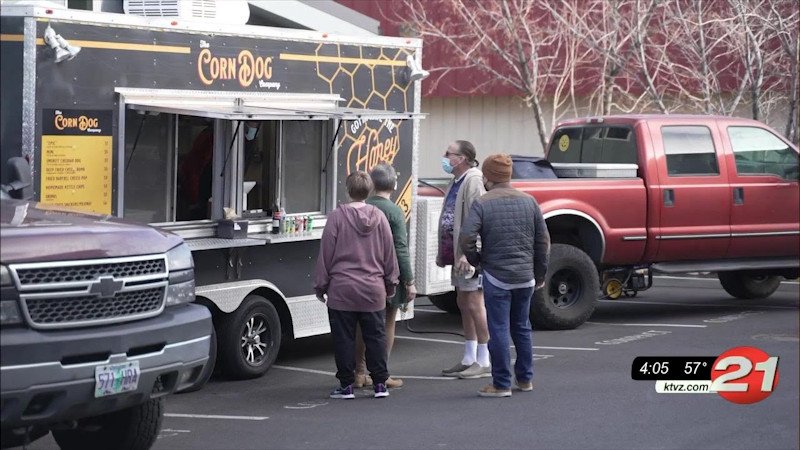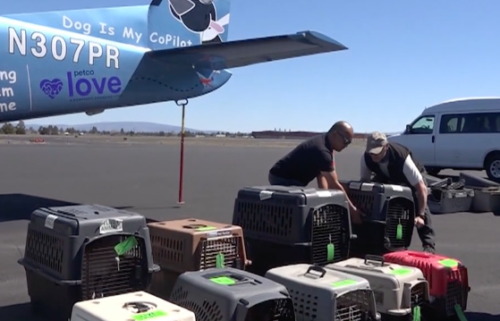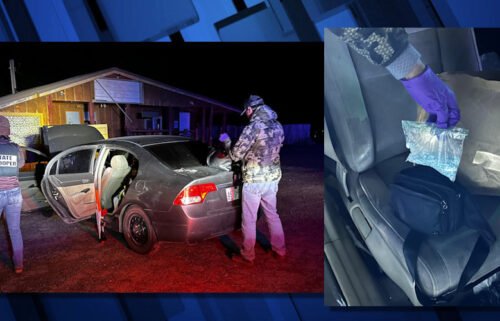Oregon Health Authority’s new food cart rules just took effect, after 3-year grace period

PORTLAND, Ore. (KTVZ) — New statewide mobile food unit rules officially went into effect Jan. 1, following a three-year grace period to give operators time to come into compliance, the Oregon Health Authority said this week.
The new rules for mobile food units, or food carts, were established on Feb. 1, 2020, so counties statewide could strengthen enforcement and protect the public.
OHA and local public health agencies continue to be supportive and are ready to work with operators on compliance schedules to give them more time, the agency said.
Mobile units will not be closed immediately if they are not in compliance with these new rules if they are actively working on a solution that has been approved by the Local Public Health Authority.
Mobile food units make up a diverse and thriving industry that Oregon is nationally known for. Oregon Health Authority said it supports their growth statewide.
The agency is unique in that it does not automatically require a unit to have a commissary – a licensed kitchen where dishes can be washed, food is prepared in advance, and food and equipment are stored – if operators can show their units can be self-sufficient. Operators must, however, keep everything “integral” to the unit and operate within the capacity of the unit.
Integral
Integral means that all equipment associated with a mobile unit is rigidly and physically attached to the unit without restricting the mobility of the unit while in transit.
Around the state, there have been challenges with non-integral items sitting on the ground around mobile units, which creates gathering places for insects and rodents. Because of this, OHA has strengthened enforcement for violations, with the support of the Rule Advisory Committee.
The rules
All mobile food units must be designed with integrated, on-board potable and wastewater tanks. A mobile unit may also connect to water and sewer if available at the operating location, but the tanks must always remain on the unit.
One exception applies to mobile food units licensed prior to Feb. 1, 2020, in which the water tanks and associated plumbing were removed prior to that date. Those units are not required to reinstall the tanks and associated plumbing if the unit is still connected to an approved water and sewer system in its original licensing location.
A mobile food unit may not connect to a freshwater system without also connecting to an approved sewer system.
Because all operations and equipment must be integral parts of the mobile food unit, those that use potable and wastewater storage tanks that are not integral to the unit must discontinue the use of these tanks. Properly sized tanks may need to be installed on the unit to meet their current needs for fresh and wastewater.
A mobile food unit may use folding shelves or small tables that are integral to the unit for display of non-potentially hazardous condiments and customer single-use articles, such as disposable utensils and napkins. The shelves or small tables must be designed and installed so they do not impede the mobility of the unit when retracted.
What hasn’t changed
Off-unit items such as refrigerators, freezers and water/wastewater tanks have never been allowed, and there is no change to the requirements. These violations are now a higher priority in the Food Sanitation Rules, allowing county inspectors greater ability to enforce them. Additionally, off unit water tanks become a public health problem when wastewater spills or there is improper disposal on site.
Background
In 2018, the OHA Foodborne Illness Prevention Program formed a Rules Advisory Committee that included mobile food unit operators, interested parties, industry association representatives and regulators. The following year, OHA conducted informational meetings, inviting every mobile unit operator statewide to attend. The meetings – in Bend, Medford and Salem – included presentations and discussions about the proposed rules, the timeline of the rulemaking process and a question-and-answer session.
After hearing formal testimony on the proposed rules during a public meeting, OHA created a document outlining the major rule changes. These rule changes have been available online for the public since 2019 and the significant changes document was given to operators by local environmental health inspection staff during inspections.
Operators and the public can learn more about the food and safety rules for mobile food units here: https://www.oregon.gov/oha/PH/HEALTHYENVIRONMENTS/FOODSAFETY/Documents/foodsanitationrulesweb.pdf
A link to the significant changes document can be found here: https://www.oregon.gov/oha/PH/HEALTHYENVIRONMENTS/FOODSAFETY/Documents/musignifchangenglish.pdf
Here is a link to OHA’s food safety webpage: https://www.oregon.gov/oha/PH/HEALTHYENVIRONMENTS/FOODSAFETY/Pages/index.aspx



